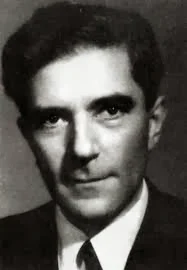Serving the worldwide community of radio-electronic homebrewers. Providing blog support to the SolderSmoke podcast: http://soldersmoke.com
Podcasting since 2005! Listen to our latest pocast here:
Podcasting since 2005! Listen to Latest SolderSmoke
Wednesday, November 6, 2013
Zoltan Bay and his Chemical Moonbounce Detector
In March 1944, Bay recommended using the radar for scientific experimentation, including the detection of radar waves bounced off the Moon. The scientific interest in the experiment arose from the opportunity to test the theoretical notion that short wavelength radio waves could pass through the ionosphere without considerable absorption or reflection. Bay's calculations, however, showed that the equipment would be incapable of detecting the signals, since they would be significantly below the receiver's noise level.
The critical difference between the American and Hungarian apparatus was frequency stability, which DeWitt achieved through crystal control in both the transmitter and receiver. Without frequency stability, Bay had to find a means of accommodating the frequency drifts of the transmitter and receiver and the resulting inferior signal-to-noise ratio. He chose to boost the signal-to-noise ratio. His solution was both ingenious and far-reaching in its impact.
Bay devised a process he called cumulation, which is known today as integration. His integrating device consisted of ten coulometers, in which electric currents broke down a watery solution and released hydrogen gas. The amount of gas released was directly proportional to the quantity of electric current. The coulometers were connected to the output of the radar receiver through a rotating switch. The radar echoes were expected [11] to return from the Moon in less than three seconds, so the rotating switch made a sweep of the ten coulometers every three seconds. The release of hydrogen gas left a record of both the echo signal and the receiver noise. As the number of signal echoes and sweeps of the coulometers added up, the signal-to-noise ratio improved. By increasing the total number of signal echoes, Bay believed that any signal could be raised above noise level and made observable, regardless of its amplitude and the value of the signal-to-noise ratio.26 Because the signal echoes have a more-or-less fixed structure, and the noise varies from pulse to pulse, echoes add up faster than noise. From: http://history.nasa.gov/SP-4218/ch1.htm
During the war, Zoltán Bay protected Jewish colleagues from Nazi persecution. In 1998, the State of Israel honored him as Righteous Among the Nations for his actions and listed his name at Yad Vashem.
Our book: "SolderSmoke -- Global Adventures in Wireless Electronics" http://soldersmoke.com/book.htm Our coffee mugs, T-Shirts, bumper stickers: http://www.cafepress.com/SolderSmoke Our Book Store: http://astore.amazon.com/contracross-20
Subscribe to:
Post Comments (Atom)

Brilliant. It's worth clicking through to read the full story. He did this work in Hungary during and after WWII!
ReplyDeleteotro talento
ReplyDelete